Caring for Goats After Kidding
There are a few things that need to take place immediately after your Dam gives birth. In this post, I'll take you through the process of caring for your goats after kidding. I'll cover the after-care that should be administered to both your Dam and her kids in a timeline form, starting from immediately after kidding to around the first month.
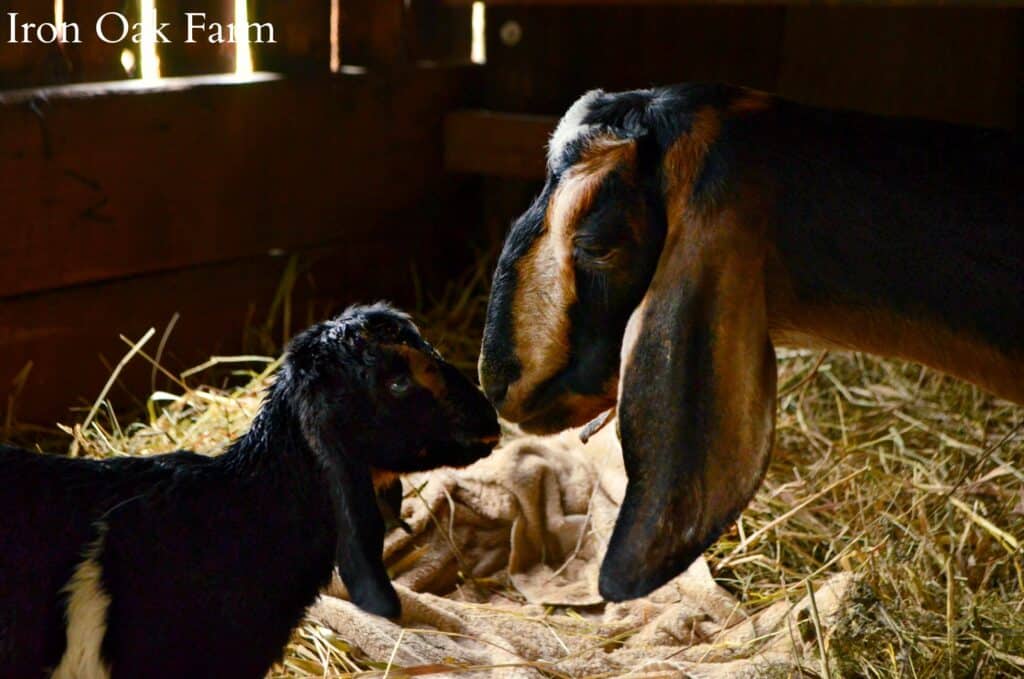


Immediately after kidding
Immediately after your Dam gives birth you should bring the kid up to the mother's face so that she can begin cleaning the baby. This is a maternal instinct that helps the kid bond with the mother and vice versa. This will help to kick in other instincts like encouraging the kid to nurse.
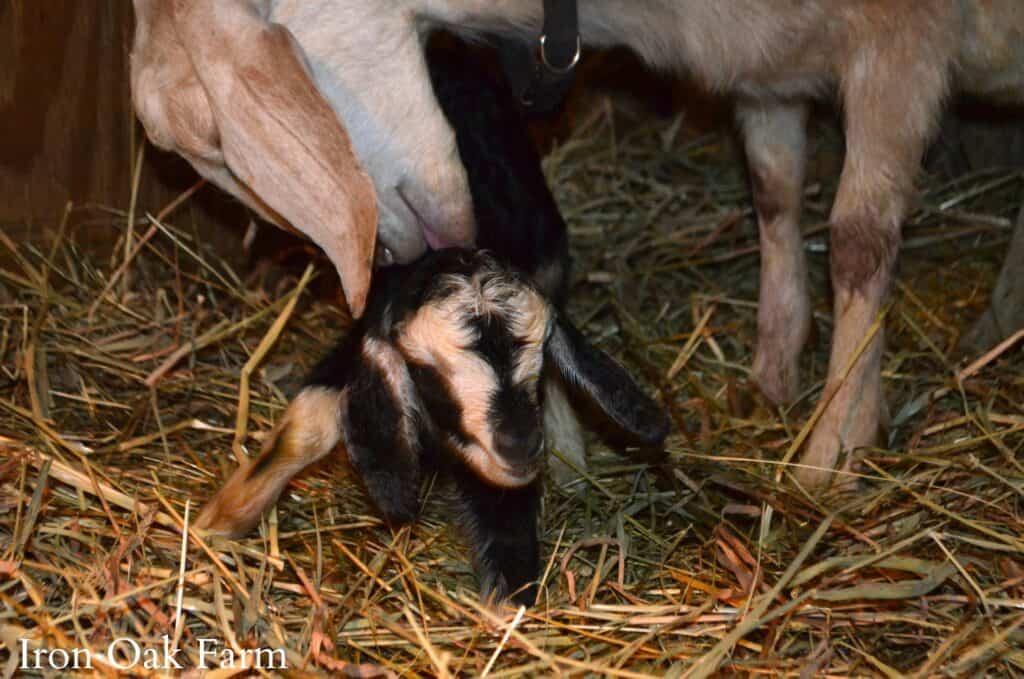


It might be tempting to hold the baby yourself, or wrap it in a towel and dry it off, but it is essential to let the mother do this first. She is learning the scent, and taste of her baby so that she will feel the instinct to protect and nurture her kid.
If the weather is cold, I let them bond for a few minutes alone and then begin drying the baby while mom is still licking. I try not to interfere with what she's doing. After a while, your doe might take a break from licking, or she might begin giving birth to another kid. At this time it's ok to dry the kid thoroughly with a towel and even use a hair dryer if necessary. If the weather is warm, I just let mom take care of things.



Molasses for Mom
Our goats always drink a ton of water after giving birth. Mom will especially appreciate a warm bucket of molasses water. The sugar will give her energy, the water will rehydrate her and the iron in the molasses will replenish her. I usually mix about a 1/2 cup into a gallon of warm water.
After she gives birth I offer electrolyte water along with regular water so she can add back lost minerals and vitamins.
Tieing umbilical cords
After our kids are born we tie their umbilical cords with dental floss and dip them in iodine. Tie the cord about an inch away from the belly. Be sure to trim any additional floss so that it doesn't accidentally get stepped on and tear. Then I dip the whole cord in iodine. This prevents bacteria from entering the umbilical cord while it dries over the next few days. The iodine sterilizes the cord opening. I dip the cord each day for 2 more days to prevent infection.



Probiotic jumpstart
We like to give a probiotic supplement shortly after birth. This will jumpstart the rumen and can increase appetite thus making the kid more eager to seek out the teat to nurse.
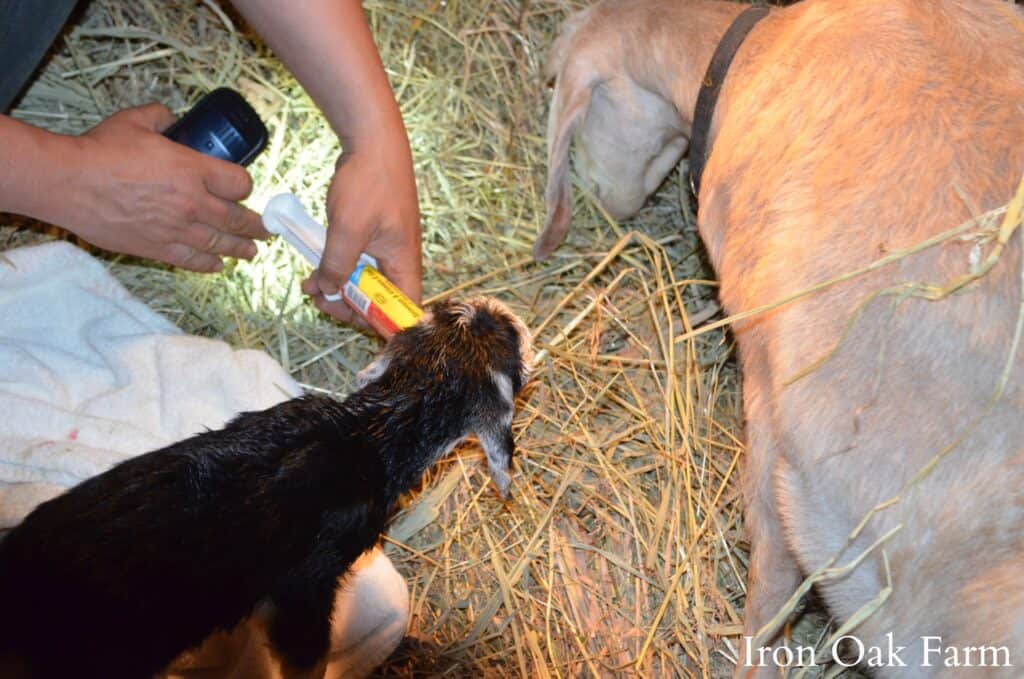


Selenium supplement
We also like to give our kids a selenium supplement right after delivery. Our soil is really deficient in selenium and even though we give our dams supplements, our kids are usually born deficient. You can tell this because they often walk on their pasterns (the tops of their hooves). The feet will want to curve over. Their backs will also be hunched. A selenium deficiency affects their stability and ability to get to mom to nurse easily. If left unchecked the kid will die.
I recommend contacting your local county extension to find out if your local soil is selenium deficient.
Within an hour after birth
Within the first hour after birth, the kids should be attempting to stand and nurse. It's important that the kid ingest her first drink of colostrum within the first hour to an hour-and-a-half after being born. If it goes on for much longer than this, the kid will become weak and may give up on finding the teat.
We often have to assist our kids with this process. Most of our dams are bottle-raised, and sometimes bottle-raised dams aren't the best at encouraging their own kids to nurse. The kids will often chase their mothers around the pen looking for a teat until they are exhausted. Sometimes the mother has to be restrained until she figures out what the kid wants.



In these situations, the kid will also need help finding the teat on the mother's body. They will sometimes attempt to nurse on her chest or leg. To be safe, assist the kid until he gets a few good sucks of milk on his own. When it clicks between Mom and Kid, the kid will know right where to go and Mom will slightly open her leg and squat. She may also lick the kid's bottom to encourage nursing. The kid may bump the udder to tell mom to let down milk. These are all signs that everything is going well.
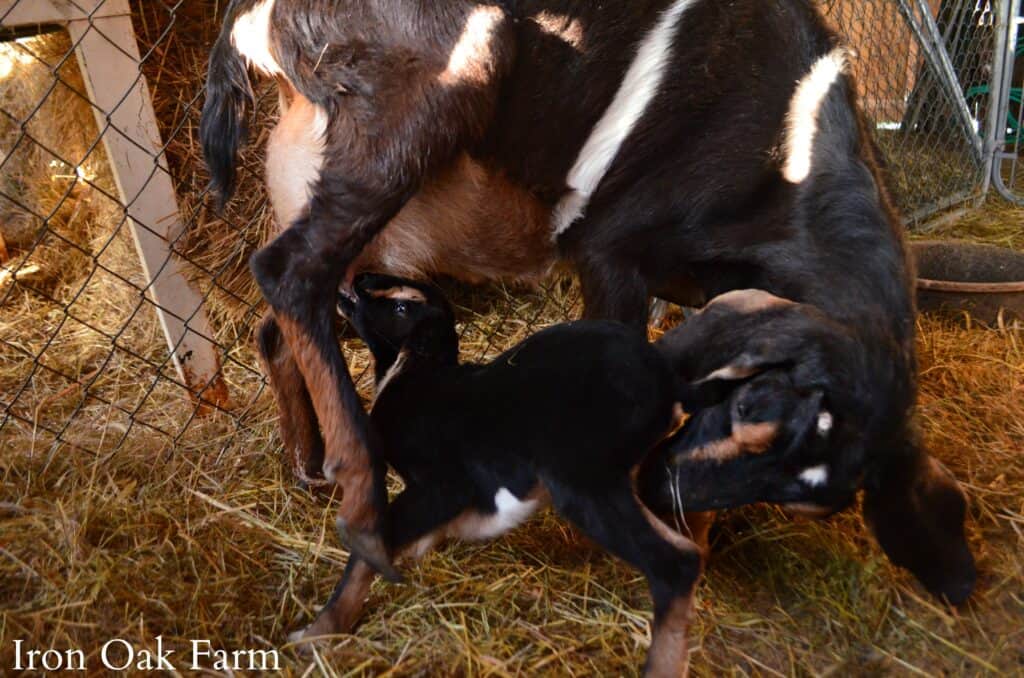


The dam will eat the placenta
When our goats give birth I try to catch the placenta on a clean feed bag or tarp so she can easily eat the placenta. This is a normal, instinctual process for your goat.
Bumping to check for more kids
After your goat kids, you'll want to check to see if she has delivered all her babies. To do this you can do the bump test.
Place your arms around the goat's abdomen just in front of her back legs, like you're giving her a hug. Turn your palms up on her belly. Gently pull the goat's belly up toward her spine and quickly let go, allowing the belly to drop. Keep your hands on her belly as it falls and after a small delay, you should be able to feel a fluid release or wave, or you may be able to feel the kid itself.
Within a week
Along with checking your goat kids to make sure they are thriving, there are some other things that you should be doing within the first week after your kids are born.
Check the umbilical cord
By now the umbilical cord should be dry, shriveled, and black. Leave it be, it will fall off on its own. Check the area where the cord meets the belly for signs of infection: redness, swelling, feverish to the touch. If anything looks off, contact your veterinarian immediately.
Disbudding
If you plan to disbud, this should be done within the first week to 10 days. Earlier for bucklings.
Check out my post Should I Dehorn or Disbud My Goat to learn the pros and cons of each choice.
We disbud on day 5, that way the kids have time to gain strength after being born, but it's early enough that the horn bud hasn't broken through the skin. Check out my post How to Disbud a Goat Kid to learn more.
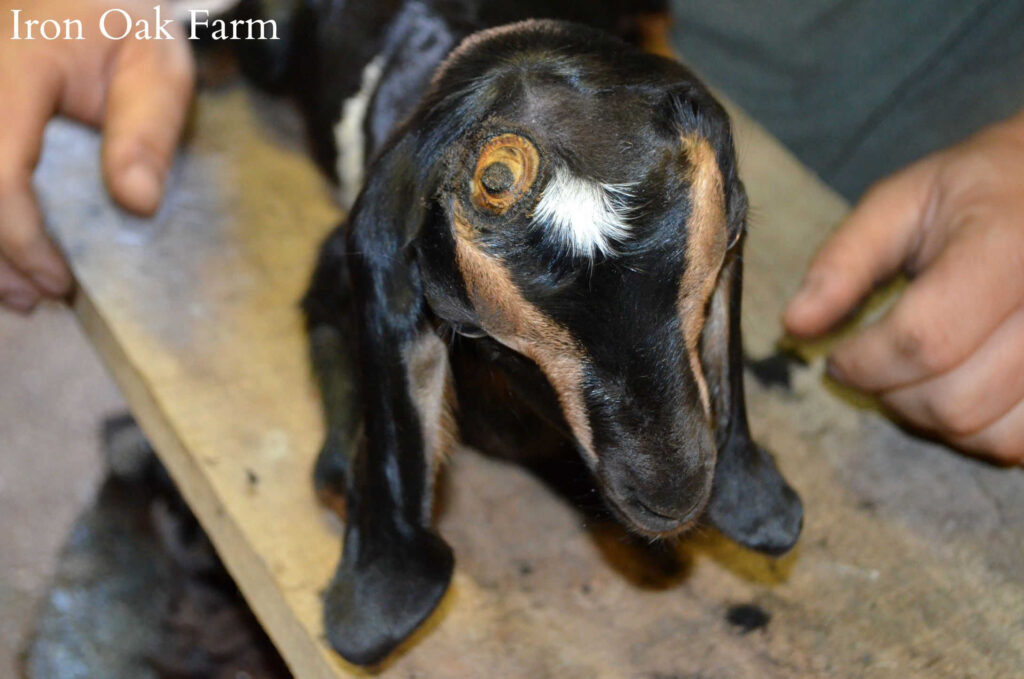


Udder care
Check your dam's udders and teats to ensure that the kids are nursing evenly. Often kids will prefer one teat over another (especially if it's a single kid). The kid will drain that teat while the other fills and fills with milk. The larger the teat gets, as it expands with milk, the less desirable the teat becomes and the kid will refuse it even more. We often have to milk out one side of our goat until the kid gets used to drinking from both sides. If left unchecked, your dam will get mastitis, an infection of the udder.
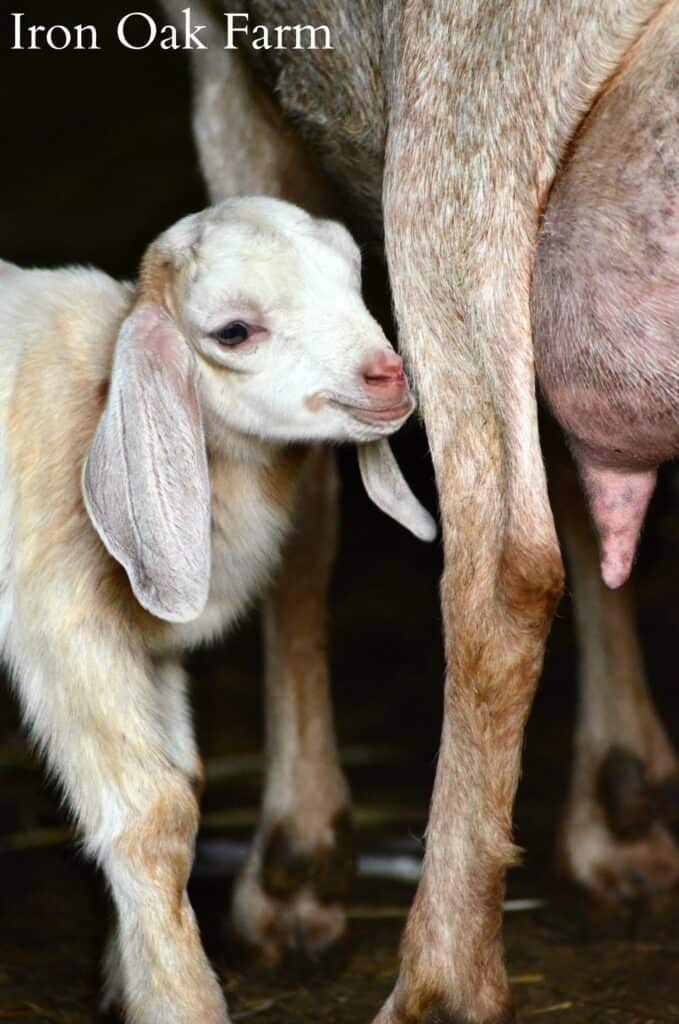


Kid digestion
You might notice that right after your kid was born its poo was a mustard-yellow color. As the rumen develops the poo will turn black and have the consistency of sticky tar. This will continue as the 4 chambers of the rumen develop. Eventually, the dropping will be tiny versions of an adult's oval droppings.
Within a month
After a month, things should be getting easier for everyone involved. Mom should be taking care of her kids, they should be healthy and bounding around by now. There are a few more kid-related things that you need to consider.



Banding (castrating)
We band our wethers around 4-5 weeks of age. I don't like to band too young because you run the risk of banding before both testicles have dropped. It can also cause urinary problems in the future.
Technically you can band any goat whose scrotum will fit through the banding tool. However, the longer you wait, the harder it is on the goat.
Kid diet
Around a month old the kids will begin exploring different foods. They might nibble on Mom's hay or roll some grain around in their mouth. At this time we begin to provide hay, water, and minerals to our kids at a lower level so they can reach.
Over the next few months, they will slowly increase the amount of grain, hay, and water and depend less on mom for milk.
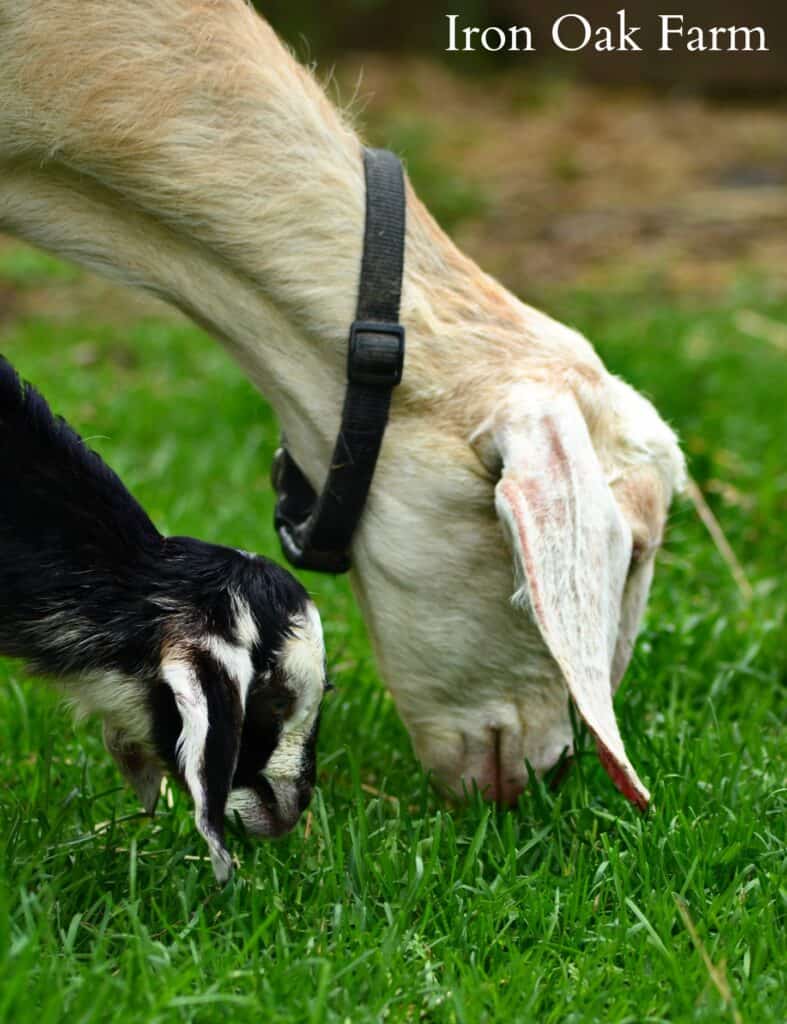


Although, we have had some greedy kids who will attempt to nurse from mom until they are almost half her size. When they bump her they throw her off her back legs.
Shop this post!
Pin it for later!


